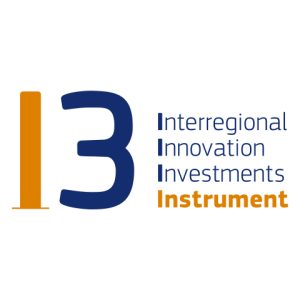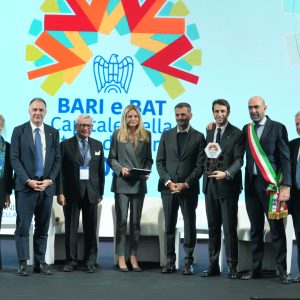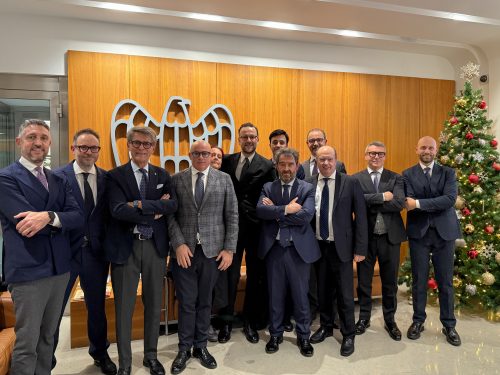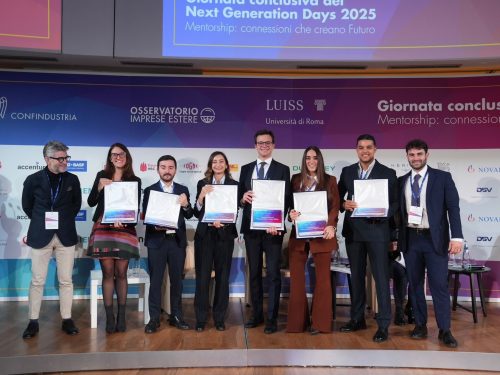Share on
- Between 2000 and 2020, real wages in Italian manufacturing grew by 24.3%, roughly in line with the cumulative change in labour productivity (22.6%).
- Real wage growth was similar to that in France and higher than in Germany and Spain. But in these countries labour productivity grew much more than in Italy (twice as much in Germany). This implies a clear loss of competitiveness for our manufacturing industry.
- The comparatively weak dynamics of productivity, in the face of wage gains in line or sometimes larger than elsewhere, has led to the erosion of the share of value added that goes to remuneration of capital. The ratio of Gross Operating Margin (GOM) to value added in Italian manufacturing started in 2000 above the average in the Eurozone, but since 2004 it has been steadily below, with a gap of 3.6 points in 2020.
- In 2021-2022, price increases eroded real wages while productivity basically held. In the coming years, wages are expected to regain purchasing power due to the contractual mechanism that spreads the effects of inflationary flare-ups over several years.
- Over the same period, the gap between profitability in Italian manufacturing and the European average widened. Profit margins in manufacturing grew in 2021 and also in 2022, while in Italy they contracted in 2022, measured both in terms of profit share (-3.4 points the ratio of GOP to value added), in real terms (-9.2% the real GOP) and in unit terms (-3.7 points the GOP to real value added).
Improving labour productivity is the key to wage growth
Wage increases above productivity gains for prolonged periods of time necessarily imply a loss of cost competitiveness (measured by a rise in unit labour costs, ULC) and/or a thinning of corporate profitability and return on capital, with a consequent negative impact on investment dynamics and thus on long-term growth.
These considerations are all the more valid for the manufacturing sector, which is more exposed to international competition and where capital accumulation is essential for product quality and competitiveness.
What is observed in Italy?
Between 2000 and 2020, real wages per hour worked in Italian manufacturing grew by 24.3%, almost in line with the cumulative change in labour productivity (22.6%).
Looking at the year-by-year development, some misalignments can be observed (Figure A). In correspondence with the slowdown in activity in the early 2000s and even more so with the slump in 2008-2009, wage dynamics, supported by contractual mechanisms and the activation of social shock absorbers, appears to have advanced at an unchanged pace, despite the pro-cyclical trend in productivity. By contrast, in the expansionary phase following the sovereign debt crisis, larger productivity gains were recorded, above wage increases. The mismatch had already started to narrow in 2019 and finally closed in 2020. In fact, the erga omnes extension of the CIG ordered by the government at the beginning of the health emergency has, on the one hand, propped up productivity (hours worked fell almost in unison with activity levels) but has also, together with business support, safeguarded employment and wages.

The two-year period 2021-2022 was strongly marked by increases in inflation triggered first by supply bottlenecks following the Covid crisis and then by the energy crisis. Rising prices eroded real wages, while productivity basically held up. In the coming years, wages are expected to regain purchasing power, by virtue of a bargaining mechanism (agreed between the social partners in 2009 and most recently reaffirmed with the 2018 Factory Pact) that spreads the effects of inflationary flare-ups, such as those observed since the end of 2021, over several years. It will remain crucial that wage increases to cover inflation are accompanied by sufficient productivity gains to avoid an erosion of company profitability, to the detriment of the propensity to invest, or a rise in ULC, which would feed inflationary pressures.
The situation compared to other countries: balance in the twenty years before the energy crisis
Real wage growth in the Italian manufacturing sector between 2000 and 2020 was almost in line with that recorded in France (+25.3%) and higher than in Germany (+18.1%) and Spain (14.4%). In all the main competitor countries, however, labour productivity grew much more than in Italy, twice as much in Germany (+40.2%; Figure B).

The real issue for Italy is low productivity growth, which penalises competitiveness and return on capital in manufacturing
Such limited productivity gains compared to other countries have resulted in a clear loss of competitiveness for our manufacturing industry. Between 2000 and 2020, Italy lost 26.4 points of competitiveness compared to Germany measured in terms of ULC, 26.8 compared to the Eurozone average (Figure C).

A vicious circle to be broken
Another corollary of the comparatively weak dynamics of productivity, in the face of wage gains in line or sometimes larger than elsewhere, is the erosion of the so-called 'profit share' or 'capital share', i.e. the share of value added that goes to remuneration of capital, measured by the ratio of Gross Operating Margin (GOM) to value added. This ratio in Italian manufacturing started in 2000 above the average in the Eurozone (38.3% versus 34.7%), but since 2004 it has been steadily below, with a gap of 3.6 points in 2020 (34.8% versus 38.4%; Figure D).

In 2021-2022, the gap between profitability in Italian manufacturing and the Eurozone average widened. In fact, profit margins in manufacturing in other Eurozone countries grew not only in 2021 but also in 2022, while in Italy they contracted in 2022, measured both in terms of profit share (-3.4 points the ratio of GOP to value added), in real terms (-9.2% the real GOP) and in unit terms (-3.7 points the GOP to real value added).
The decline of the capital share in Italian manufacturing is neither explained by a decrease in capital intensity, nor has it translated into a reduction of the investment rate. On the contrary, the capital-labour ratio has continued to rise and gross fixed capital formation as a percentage of value added has expanded, at a faster pace since the double-dip recession. These trends imply a decline in the return on capital even more intense than that suggested by the dynamics of the profit share, and this can only act as a brake on innovative, large-scale and inherently risky investments, which are instead the key to more extensive and lasting productivity gains. From this picture emerges the impression that Italian industry is stuck in a vicious circle where the lack of productivity growth is both cause and effect of the loss of competitiveness (Figure E).

There is an urgent need to break this vicious circle, all the more so now that rising interest rates add a further brake on investment. What is needed is an easing of the tax burden (on labour and capital), which in the short term will help wages regain purchasing power and ease the squeeze on profits. Extending the horizon, policies supporting business innovation and strengthening the innovative capacity of the entire economic system are crucial. This is why the NRP game cannot be lost.




































